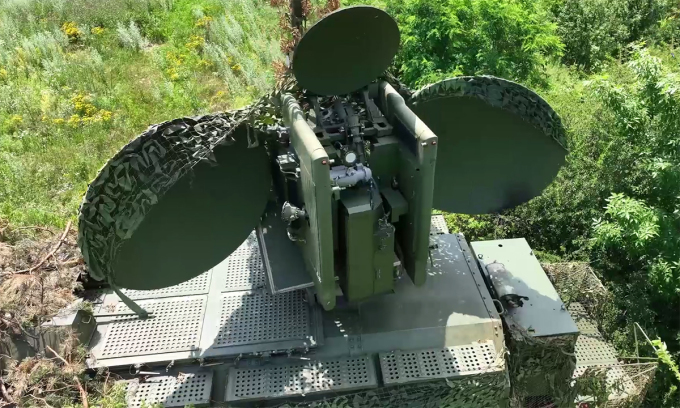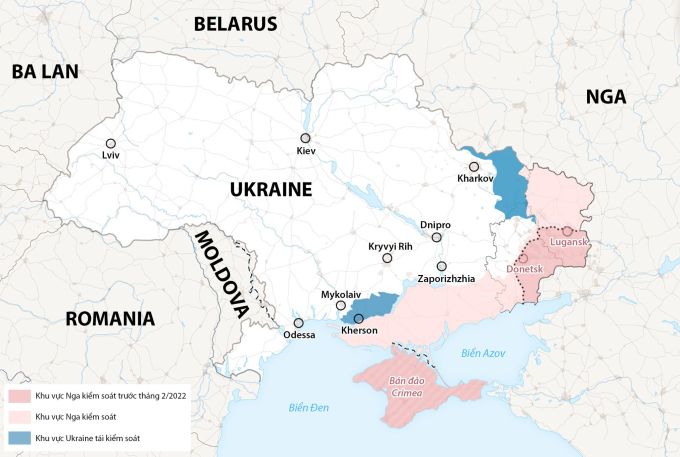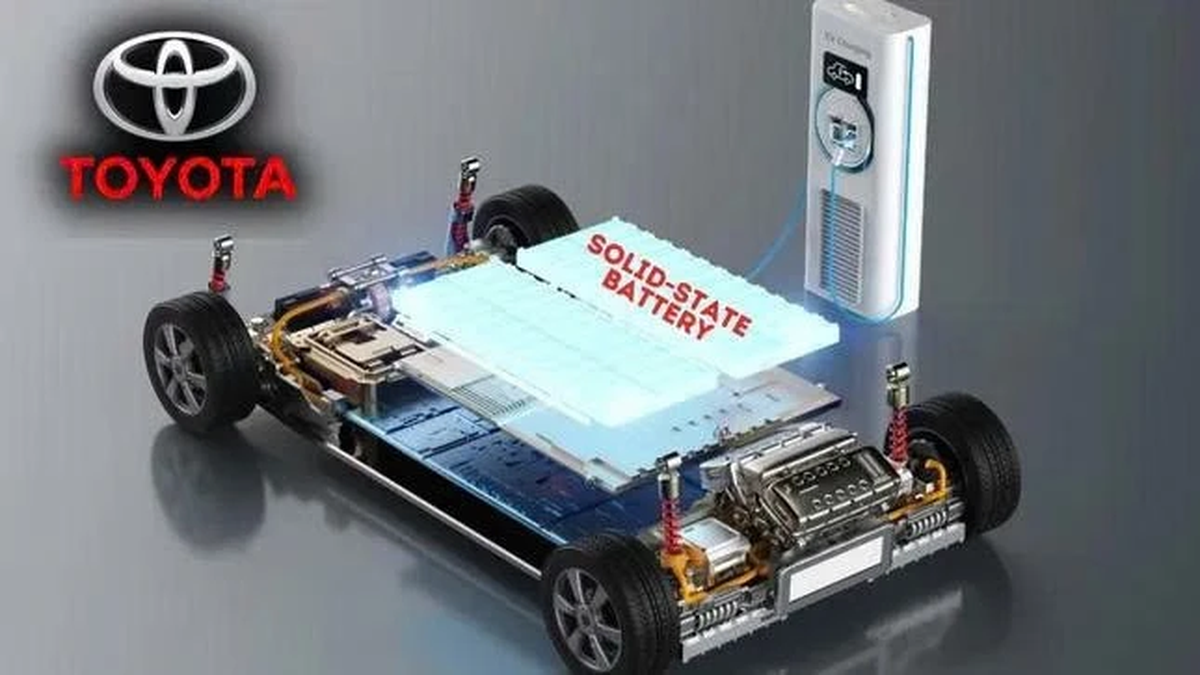Ukraine is looking for many ways to deal with Russia's electronic warfare system, which is considered an "invisible killer" that neutralizes a large number of their UAVs.
To conduct reconnaissance and strike at Russian forces on the front lines, the Ukrainian military relies heavily on civilian unmanned aerial vehicles (UAVs). Ukrainian explosive-laden UAVs have inflicted heavy damage on enemy troops and equipment, but their effectiveness has diminished as Russia has adapted and enhanced its electronic warfare measures.
Ukrainian UAVs often use common radio frequencies for control, so they are easily jammed by Russian electronic warfare systems, causing them to lose connection with their operators and crash or be forced to land.
A report by the Royal United Services Institute (RUSI) stated that Russian electronic warfare forces had shot down up to 90% of Ukrainian UAVs in the early stages of the war. This is one of the reasons why Russian electronic warfare systems are considered "invisible killers" on the battlefield.
However, the situation seems to have changed and Russia's ability to jam and control UAVs has significantly decreased, as Ukraine applies new technological solutions that are considered more sophisticated to deal with enemy electronic warfare systems.

Russia's Krasukha-S4 electronic warfare complex on the battlefield on July 13. Photo: Russian Ministry of Defense
During the first year of the war, Russia used powerful jamming devices to suppress UAVs that were tasked with directing artillery targets or dropping grenades into trenches.
A Ukrainian UAV operator said that by the end of 2022, their UAVs will be able to fly 6 kilometers behind enemy lines. However, during the operation to defend Bakhmut earlier this year, Ukrainian UAVs only flew one kilometer over the front line, and could not even cross it.
Other Ukrainian soldiers have told similar stories. Ukrainian Colonel Serhiy Ogerenko said in March that his unit’s UAVs lasted only half a day, while the artillery’s longer-range UAVs “could last for a month.”
According to a May report by RUSI, Ukraine loses up to 10,000 UAVs a month, mostly to Russian electronic warfare. Without UAVs to direct targets, Ukrainian artillery has a much harder time hitting targets.
Both Russia and Ukraine have recently deployed more jamming systems to the battlefield to counter the threat from enemy UAVs. Russian jamming systems not only neutralize Ukrainian UAVs but also affect JDAM guided bombs and Excalibur guided artillery shells provided by the US.
However, in recent weeks, Ukraine has significantly increased its use of UAVs in its counteroffensive to target artillery, attack trenches, and take out Russian combat vehicles. Western experts have been surprised by Ukraine’s ability to counter UAVs on the Russian front line.

Russian servicemen patrol near the location of the Krasukha-S4 electronic warfare complex on July 13. Photo: Russian Ministry of Defense
Mykola Volokhov, a Ukrainian UAV operator, said the problem of connecting to the aircraft, which had been suppressed by Russia for a long time, had been resolved. "We have certain secrets, but I cannot reveal them," Volokhov said.
Ukrainian soldiers also found a way to modify the control software to disable the ability of DJI UAVs to locate their operators. Ukrainian engineers designed a device called Olga, which can be plugged into the USB port of a DJI UAV to automatically load modified control software. After interfering with the system, instead of transmitting the actual coordinates, the UAV will display a position of 0 latitude, 0 longitude to ensure secrecy.
Countering jamming is more difficult, but not impossible. Some militaries have adopted the solution of using antenna clusters to set up highly directional transmitters that can filter out interference.
This filter is capable of blocking interference waves not sent by the operator, preventing the risk of UAV interference. The intelligent signal receiver can also switch frequencies to find frequencies that are not subject to interference.
Thomas Withington, an electronic warfare expert, said Ukraine may have found a way to counter Russian jamming for some time. However, he warned that any countermeasures taken by Ukraine would not be a long-term solution.
“Electronic warfare is a constant race, with each countermeasure having a countermeasure in a never-ending game of cat and mouse,” Withington said. “In military conflict, the process is even faster.”

The situation of the war between Russia and Ukraine. Graphics: WP
Another solution for Ukraine is hard suppression, which means using missiles and rockets to attack and destroy Russian electronic warfare equipment.
Typically, electronic warfare systems with powerful jamming capabilities have large transmitters. This makes them easy to locate and highly vulnerable to artillery or missile fire. They can also be attacked by jamming UAVs, a low-cost version of the US-made AGM-88 HARM anti-radar missile.
Volokhov and other Ukrainian soldiers believe they can continue to use civilian drones to attack Russian forces. These drones may be neutralized by Russian electronic warfare in the future, but for now they are effective and give Ukraine an advantage.
Nguyen Tien (According to Forbes )
Source link
























![[Photo] National Assembly Chairman Tran Thanh Man visits Vietnamese Heroic Mother Ta Thi Tran](https://vphoto.vietnam.vn/thumb/1200x675/vietnam/resource/IMAGE/2025/7/20/765c0bd057dd44ad83ab89fe0255b783)









































































Comment (0)